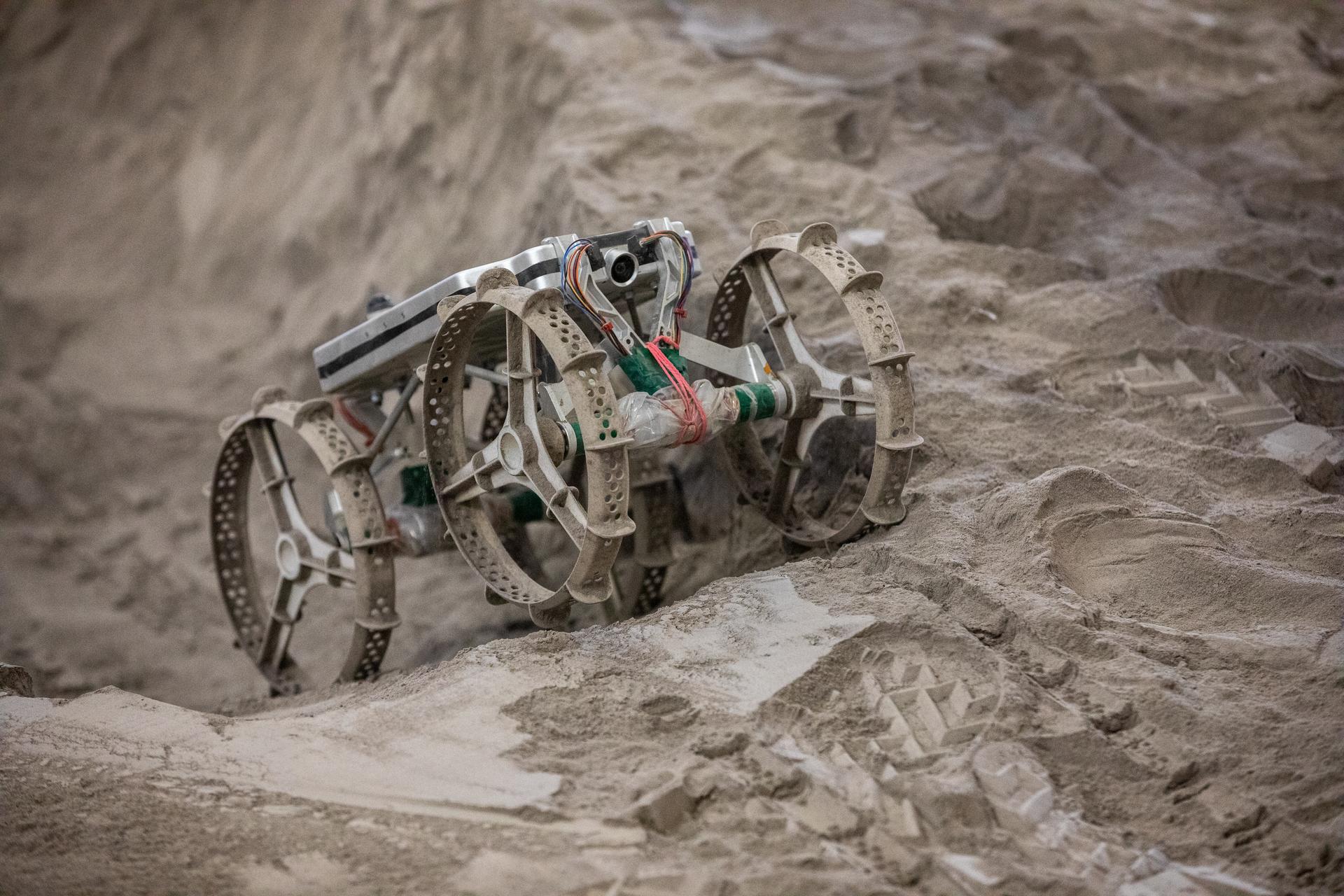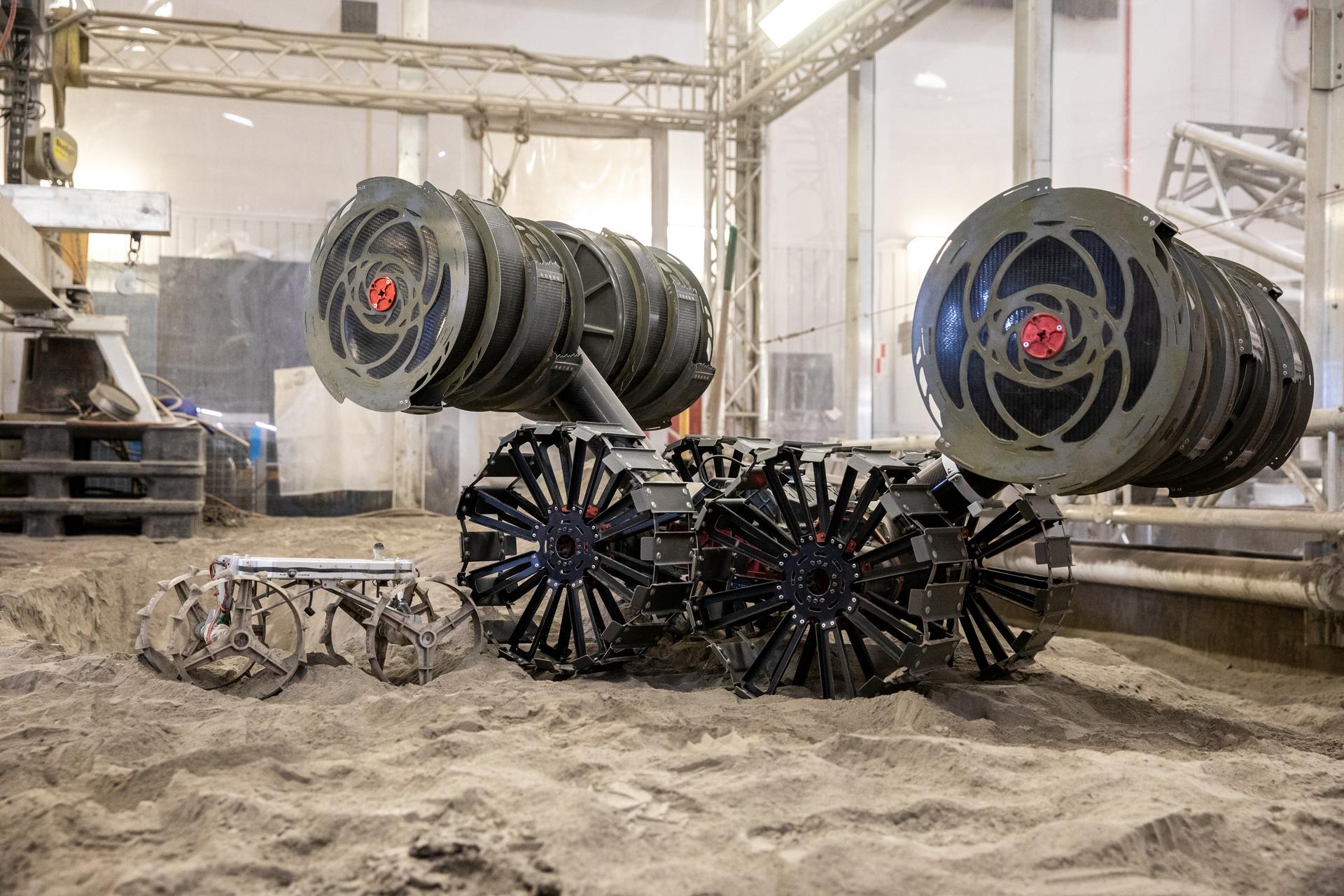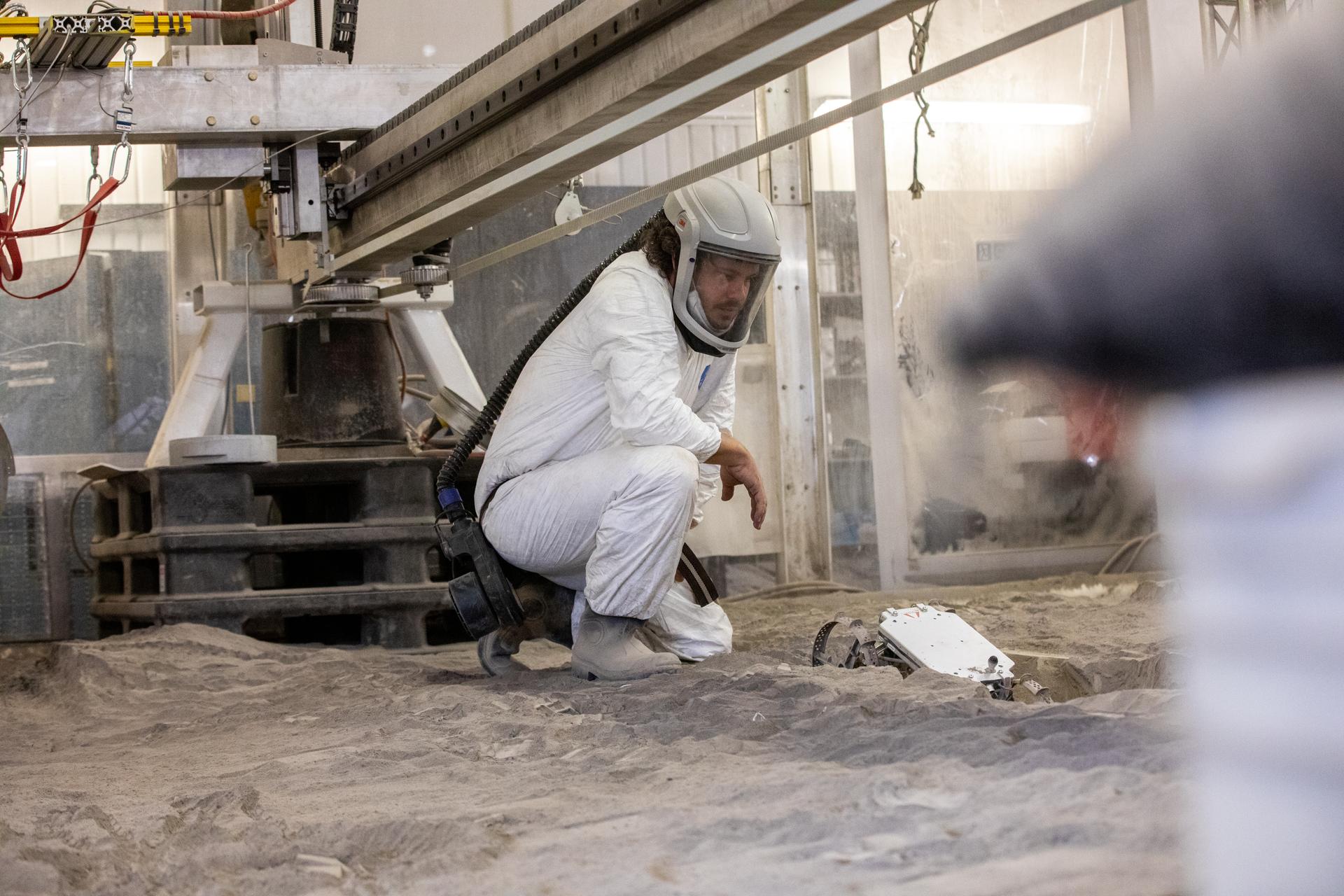
By Linda Herridge
NASA’s John F. Kennedy Space Center
Researchers at NASA’s Kennedy Space Center in Florida recently put a new, small robotic rover through its paces inside a 120-ton bin of regolith rock and dust that simulates the lunar surface.
The four-wheeled CubeRover rolled over dunes of abrasive dust, turned in place, and then trundled up and down steep trench walls within the Granular Mechanics and Regolith Operations (GMRO) laboratory as it performed more than 150 mobility tests. The rover’s creators, from Astrobotic Technology of Pittsburgh, worked alongside Kennedy’s Swamp Works team, assessing the robot’s maneuverability and how its sensor, motor, and power systems operated in the dusty environment.
NASA is spurring commercial development of these shoebox-sized rovers much like it has with CubeSats, whose small, standard size allow researchers and students to build and launch low-cost satellites on NASA missions. Like the small satellites, the rovers’ standardized design creates opportunities to conduct a wide range of missions that will expand science, exploration, and commercial activity on the Moon.
“CubeRovers are light – in the 9-pound range – and have relatively low deployment and development costs. This dramatically reduces flight cost, making CubeRovers excellent platforms for technology demonstration missions,” said Mike Provenzano, Astrobotic’s director of planetary mobility.
Astrobotic’s miniature rover began as a concept more than a decade ago with funding from NASA’s Small Business Innovation Research/Small Business Technology Transfer (SBIR/STTR) program. The program funds research, development, and demonstration of innovative technologies that fulfill agency needs and have a high potential for successful commercialization.

Commercial development of small rovers allows engineers, entrepreneurs, and scientists to test novel, exciting, and high-risk concepts on Earth and then on the Moon. CubeRovers will be the first to demonstrate several capabilities, such as recharging from a centralized power source in a regolith environment, repairing surface assets, and establishing a local communication infrastructure network.
“It’s exciting to provide logistics support for the current testing of the Astrobotic CubeRover,” said Jim Mantovani, a principal investigator in the GMRO lab and the person leading the CubeRover project at Kennedy. “It’s always great to see NASA and small business collaborate to help mature technology, and I am looking forward to seeing commercial rovers working on the Moon.”
Focusing on a variety of technology areas, NASA’s SBIR/STTR program invites startups and small businesses to propose technology solutions. The competitive award process stimulates research, development, and innovation through multiple phases.
“NASA relies on a diverse set of partners and sources, each meant to complement one another,” said Michael Vinje, the small business technology manager in the Exploration Research and Technology Office at Kennedy. “Some work is performed exclusively with university labs, while other work is performed with corporate industry partners.”
To mature more advanced technologies, NASA’s Space Technology Mission Directorate uses Tipping Point awards, which combine NASA resources with industry contributions, saving taxpayer dollars. In September 2019, the agency awarded Astrobotic a Tipping Point award to ready its CubeRover for lunar exploration. Astrobotic will use what it learns from this testing to improve its wheel design and, after additional testing, the company plans to have a flight qualified CubeRover ready in 2022.
As part of the agency’s Artemis program, NASA will regularly send dozens of science experiments and technology demonstrations to the lunar surface starting in 2021 as well as land astronauts on the Moon beginning in 2024 and about once per year thereafter. NASA contracted with 14 companies to bid on robotic deliveries for the agency through the Commercial Lunar Payload Services (CLPS) initiative. In addition to NASA payloads, these deliveries will send commercial and academic payloads, including small rovers on these missions to the Moon.
While CLPS provider missions will start with small rovers and other payloads, over time the missions will send larger payloads, such as the Volatiles Investigating Polar Exploration Rover (VIPER), scheduled to explore the Moon’s South Pole in late 2023. The water-seeking mobile robot, to be delivered by Astrobotic, will bring NASA one step closer to developing a sustainable, long-term presence on the Moon as the agency looks to Mars and beyond.
























